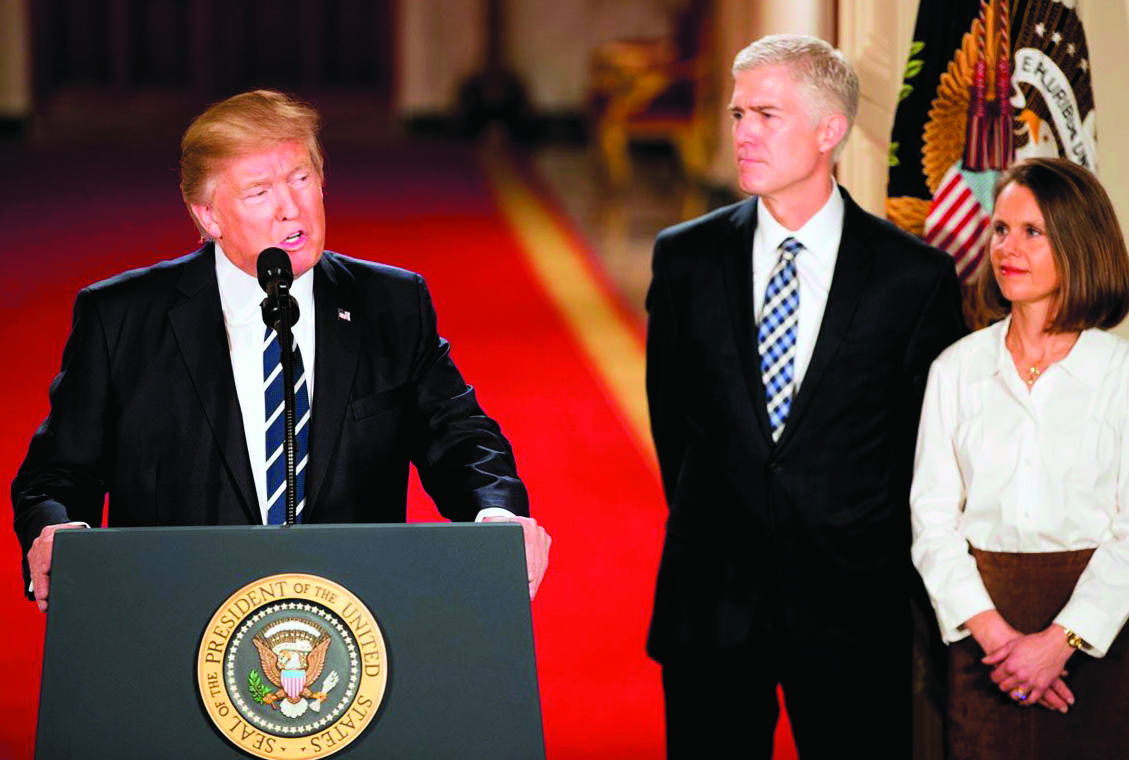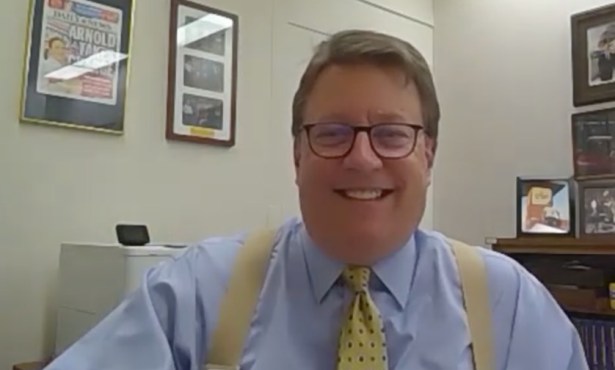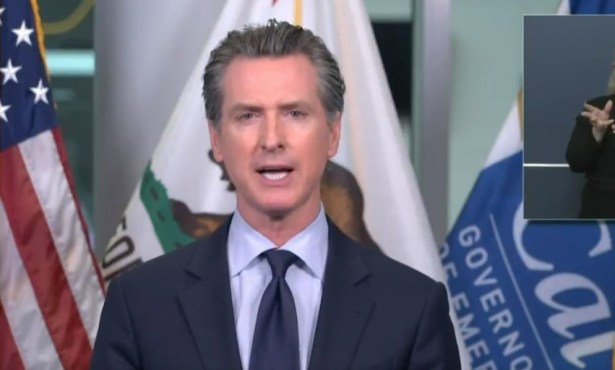Trump Justice
The Donald's High Court Win Displays His Power to Remake Federal Judiciary

At one point, Republican Senator Orrin Hatch posed a sardonic and spurious question during the Senate’s confirmation hearings for U.S. Supreme Court Justice Neil Gorsuch.
“One of my Democratic colleagues said that it’s important to know whether you are a surrogate for President Trump or for particular interest groups,” began Hatch, for decades a reliable right-wing Senate voice and vote.
“Are you?”
“No,” Gorsuch answered.
“Of course not,” the Senator replied.
To the surprise of no one, Hatch was chuckling as he said it.
As every schoolchild knows by now, the fix was in for Gorsuch when that exchange unfurled last month.
By then, Republican leaders had decided to ram through his confirmation by abolishing the historic Senate rule that previously allowed filibusters of Supreme Court nominations; the GOP’s power move meant that minority Democrats had absolutely no say over Gorsuch — and that they will have precisely that much influence over any future nominations that occur during the reign of President Hair Boy.
For the (all rise) 46 percent 45th president, the ascension of the telegenic, 49-year-old conservative federal judge to the Supreme Court marked a rare, unalloyed personal and political triumph, amid the unsettling Keystone Kops chaos that marked much of Trump’s first 100 days.
It’s far more than that, however.
At a time when the nation is bitterly and ideologically polarized over countless cultural and constitutional issues — from abortion rights, environmental law, and health care to immigration, political corruption, and voting rights — conservatives now hold hegemonic control over all three branches of the federal government.
The confirmation of Gorsuch capped a yearlong struggle over the Supreme Court seat left vacant when Associate Justice Antonin Scalia unexpectedly died in early 2016. Led by the caecilian Mitch McConnell of Kentucky, Senate Republicans took a big political gamble by refusing even to consider President Obama’s nomination of centrist federal judge Merrick Garland, absurdly arguing that only the president inaugurated in 2017 had the right to fill Scalia’s seat.
Apparently inspired by Hillary Clinton’s Flight-of-the-Hindenburg presidential race, Democrats failed utterly in transforming the Garland outrage into a campaign issue.
Actuarial amusements. Now, Republicans swiftly have restored a 5-to-4 conservative tilt to the court and set up Gorsuch to shape legal precedents for the next 40 years.
By tossing the filibuster rule, which previously required 60 Senators to agree to an up-or-down vote on a nominee, they also have set the table for Trump to put an emphatic right-wing stamp on the high court, if and when any of its three oldest members retire or croak. Longtime liberals Ruth Bader Ginsburg and Stephen Breyer are 84 and 78, respectively, while Anthony Kennedy, the only swing vote, is 80.
Even more importantly, Gorsuch is just the start of an extraordinary opportunity Trump now holds to remake the federal judiciary system to his idiosyncratic likings.
Among the U.S. government’s 840 appointive, lifetime judgeships, a rare combination of vacant seats and aging jurists is expected to hand him authority to appoint nearly 40 percent of the federal judiciary, according to a New York Times analysis.
Beyond the nine Supreme Court seats, the hundreds of lower court judgeships in many ways are more important: About 85 percent of federal cases are decided at the district level; of the much smaller number that make it to the Court of Appeals, only a very few ever land before SCOTUS.
“Mr. Trump could soon find himself responsible for appointing a greater share of federal court judges than any first-term president in 40 years,” the newspaper reported.
As with the Supreme Court, all of Trump’s lower court nominees would need only a majority vote. It must be recalled that Democrats erased the 60-vote standard for district and appellate justices in 2013, when they ran the joint and Obama was in charge.
Payback’s a bitch.



